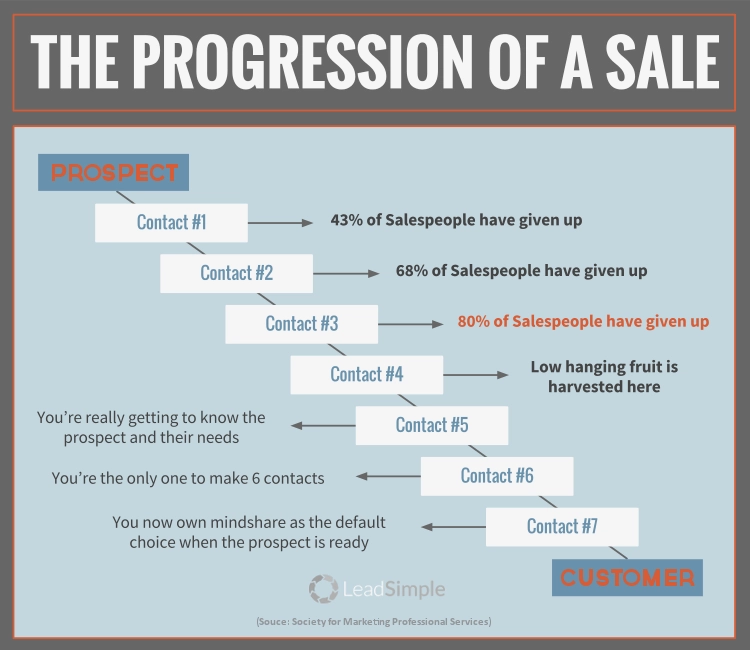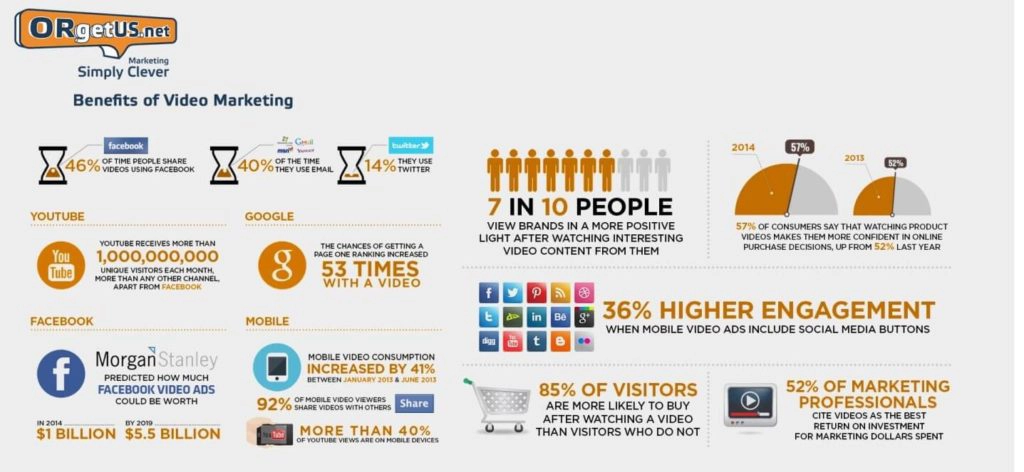
Introduction
Most marketing departments are like construction sites. Just like workers that spend their days heaving rock and dirt, marketers often do the utmost to generate brand, service, or product interest from prospective clients. It is therefore disheartening when leads say that they are not ready to buy.
Marketing processes are very capital intensive. Consequently, low conversion rates can lead to business failure. If your leads are not purchasing in droves after generation strategies, you are not alone. Data shows that 80% of all new leads will not convert, regardless of all the heavy lifting work done.
Additionally, you will find out that over 50% of your leads are not ready to buy. 63% of these prospects will not make a purchase in the first three months of engagement. 20% of them will make their purchase after a year of lead nurturing.

Source : Sales-Course
What is Lead Nurturing?
Lead nurturing develops fruitful relationships with your clients at each stage of their buyer journey. Through diverse communication and marketing efforts aimed at their needs, your marketers can nurture your prospects by providing the answers to their queries.
Lead nurturing processes will lead to a 50% increase in sales-ready leads at 33% less the costs. One great virtue of lead nurturing is that in a buyer-driven market, developed leads make 47% larger purchases than leads left in the wild.
So how can you ensure that all the lead generation grunt work, pays off? Nurture qualified leads that have not made their purchase decisions. You can do this by instituting a robust lead development campaign by;
1. Setting Up Follow Up Schedules
A very large percentage of your leads, are not ready to make that purchase when they share their contact details with you. If your sales team hounds them to force a deal, for the sake of shiny sales quotas, you will put them off.
You will not only repulse them with unwarranted attention, but they could drop off your marketing team’s radar. Lead nurturing requires a high level of finesse when contacting your prospective clients. You need to warm them up gently by first asking them what the best time is for them to make a purchase.
Will they be ready in the next quarter? Would it be okay then if you could schedule a follow-up call at the end of the current quarter? A follow-up schedule means that you are not leaving the purchase opportunity to chance.
By communicating and setting clear expectations for good follow up you will minimize vague generalizations. Let your follow up schedule outline your email and call follow-ups to ensure a timely and appropriate communication continuity process with the prospect. You should have a minimum of two contact schedules. These include;
- The passive leads schedule for qualified prospects that have a long term purchase intent
- An active leads program for responsive prospective purchasers that have the intent of making a purchase in the near term.
Your follow up timetable can have a 12 months long plan. You should however ensure that the frequency and weight of the communications alter as time passes by. Your communications with the prospect should also be based on the amount of interest the lead shows towards your products.
2. Feeding Them With Relevant Content
 Source
SourceFollow up however is not enough to keep your leads warm. You need to take a step further and engage them, not by pushing sales content down their throats but by subtly displaying your expertise without becoming an annoyance. How can you achieve this feat? By providing information and content that is relevant to their needs.
Data shows that content and email marketing are two of the most effective lead nurturing strategies. 45% of marketing influencers will choose content marketing while 47% of them will choose email marketing as their leading lead nurture process. Other lead nurturing via content sharing includes;
- How to guides
- Articles
- Infographics
- Whitepapers
- Case studies
- Video
- Testimonials
- Social media marketing
You can start this process by performing in-depth research into your lead’s preferences, language, and interests. What kind of language will warm their hearts? Who do they like to listen to? Where do they spend their online time? Understand these behaviors and character nuances via intent data.
This information will reveal your lead’s persona, which will lead to the creation of personalized lead development content. When creating your content keep it in mind that you need to feed them with fresh content every time. Recycling a fantastic video every other day will obscure your ongoing engagement with them.
Avoid salesy content, 71% of all leads say that they are easily turned off by content filled with sales pitches. If all you have to tell them is how good your services or products are, you will lose them. One more thing, you have to ensure that your content is relevant and not too intrusive. Over 26% of email list subscribers leave the mailing list due to a high frequency of emails.
You, therefore, need to figure out what is the perfect time and interval to engage with the lead. Content that aligns with your prospect’s stage in the buyer journey can increase conversion rates by up to 72%. As an illustration, 86% of prospects prefer a monthly email. It is only 15% of them that appreciate daily emails.
When it comes to lead nurture via content in B2B marketing, 49% of marketers say that articles are the most engaging and effective method of encouraging prospects down the sales funnel. The B2B lead will appreciate an informative article, which is the reason why a large percentage of B2B leads are on LinkedIn.
These prospects love content from industry knowledge leaders, meaning that a great content strategy will boost your business’s ROI. Below are a few tips on the best content creation strategies for lead generation.

Source : Orgetus
- Content with visual assets will perform better with more leads retaining 95% the message in content when in video formats.
- Use highly performing content for B2B leads nurturing processes, utilizing KPIs to measure performance. Over 83% of B2B marketers use this strategy to create content that performs and is tightly aligned with customer personas and segments
- Ensure that your content is shareable, findable, readable, usable, quotable, memorable, reportable, and actionable to positively affect decision-making and brand impression.
- Design evergreen content that is educative, informative, and entertaining to gain trust and help convert your leads. Evergreen content is like a bookmark post. It is timeless, remaining useful to your leads post-purchase.
- Create long-form articles as well. Over 71% of B2B prospects access blogs during their purchase journey. A B2B business that publishes 16 posts per month will have 3.5 times more traffic than their blog-less counterparts.
- Use storytelling to captivate your leads. Your B2B leads will be more open to purchases when they have formed an emotional response with your brand. Avoid content therefore that is only technical and numbers-based. Let storytelling give your content its shape
- Make waves with podcasts when you need to introduce tons of branded content, provide value to leads, and cement your authority.
3. Encourage a Response From Your Leads
While it is critical to engage with your prospects via content and email marketing, you need inbuilt features in these strategies that encourage the leads to respond to your efforts. Emails for instance are very easy to send but can be ignored just easily. Think about it, the average office worker has a minimum of 120 emails in their inbox to deal with each day.
So how can you encourage this lead to respond to your content? In email marketing you can;
- Ask for a response in your subject line
- Personalize your emails and add a greeting
- Write emails in simple language with few words. To boost a response rate, let your email stay within the 50 words to 125 words.
- Make a clear response request, use emotion, and automate your email sending process to ensure that the lead receives them in the morning. Emails sent between six and seven a.m have the highest open and response rates.
The lead will respond at their time, which means that response may take some time. Nevertheless, when you have encouraged them to interact with you, there are high chances of them doing so in the future.
Conclusion
To nurture the lead that is not ready to make a purchase commitment, you need to take the time to walk the journey with them. B2B purchases are especially complex, making the purchase journey from interest to intent long. By walking the journey with the prospect, you will offer them a useful compass toward the best purchase decision.
To successfully nurture this lead, stay at their pace during the journey, and build trust. Remember, your marketing strategy will only generate 3% of ready to purchase leads. While 40% will be showing intent, 56% of them will be a long way from making a purchase.
Let your lead nurture process give you the upper hand in marketing. B2B marketers that become trusted advisors by understanding and responding to the needs of their leads stand a 69% chance of closing the deal with the buyer.
Our blog
Latest blog posts
Tool and strategies modern teams need to help their companies grow.

This comprehensive guide covers everything about service marketing—its unique chara...

Believe it or not, the concept of content sharing existed long before the Internet. I...

Sales analysis is essential to avoid inaccurate forecasts and identify improvement op...




